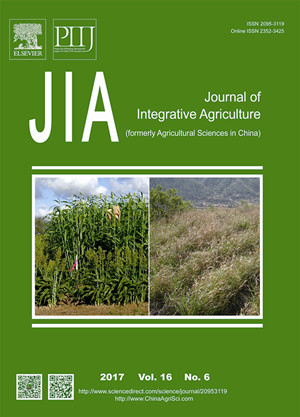|
|
Modeling the biomass of energy crops: Descriptions, strengths and prospective
JIANG Rui, WANG Tong-tong, SHAO Jin, GUO Sheng, ZHU Wei, YU Ya-jun, CHEN Shao-lin, HATANO Ryusuke
2017, 16(06):
1197-1210.
DOI: 10.1016/S2095-3119(16)61592-7
The assessment of the biomass of energy crops has garnered widespread interest since renewable bioenergy may become a substantial proportion of the future energy supply, and modeling has been widely used for the simulation of energy crops yields. A literature survey revealed that 23 models have been developed or adapted for simulating the biomass of energy crops, including Miscanthus, switchgrass, maize, poplar, willow, sugarcane, and Eucalyptus camaldulensis. Three categories (radiation model, water-controlled crop model, and integrated model with biochemical and photosynthesis and respiration approaches) were addressed for the selected models according to different principles or approaches used to simulate biomass production processes. EPIC, ALMANAC, APSIM, ISAM, MISCANMOD, MISCANFOR, SILVA, DAYCENT, APEX and SWAT are radiation models based on a radiation use efficiency approach (RUE) with few empirical and statistical parameters. The AquaCrop model is a typical water-crop model that emphasizes crop water use, the expression of canopy cover, and the separation of evapotranspiration to soil evaporation and plant transpiration to drive crop growth. CANEGRO, 3PG, CropSyst and DSSAT are integrated models that use photosynthesis and respiration approaches. SECRETS, LPJmL, Agro-BGC, Agro-IBIS, and WIMOVAC/BioCro, DNDC, DRAINMOD-GRASS, and AgTEM are integrated models that use biochemical approaches. Integrated models are mainly mechanistic models or combined with functional models, which are dynamic with spatial and temporal patterns but with complex parameters and large amounts of input data. Energy crop models combined with process-based models, such as EPIC in SWAT and CANEGRO in DSSAT, provide good examples that consider the biophysical, socioeconomic, and environmental responses and address the sustainability and socioeconomic goals for energy crops. The use of models for energy crop productivity is increasing rapidly and encouraging; however, relevant databases, such as climate, land use/land cover, soil, topography, and management databases, are scarce. Model structure and design assumptions, as well as input parameters and observed data, remain a challenge for model development and validation. Thus, a comprehensive framework, which includes a high-quality field database and an uncertainty evaluation system, needs to be established for modeling the biomass of energy crops.
|
